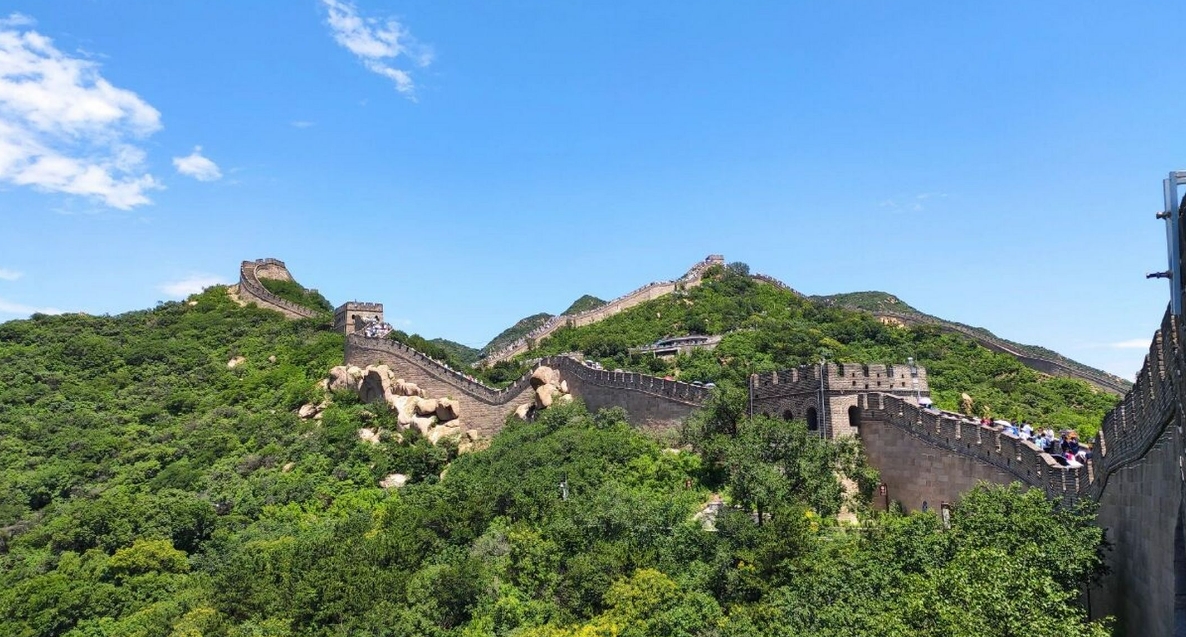
China's Green Great Wall: An Epic Battle Against Desertification
China, a land of rich history and vibrant culture, also faces formidable environmental challenges. Desertification, a silent killer, has been encroaching upon precious land and threatening the livelihoods of its people. To combat this relentless force, China embarked on an ambitious ecological endeavor in 1978 - the "Three-North Shelter Forest Program," more popularly known as the "Green Great Wall" project. This colossal undertaking aims to curb the expansion of the Gobi Desert and provide timber resources for local communities.
The Threat of Desertification
China suffers from some of the most severe desertification in the world, impacting both the size and distribution of its arid lands. Nearly a quarter of the country's total land area is covered by deserts. Before the Green Great Wall project's inception, the rate of desertification was accelerating at an alarming pace. This environmental degradation resulted in a cascade of problems, including reduced arable land, frequent sandstorms, and a deteriorating ecosystem. These issues posed a significant threat to ecological security and economic development in northern China.
The Birth of the Green Great Wall
Confronted with the escalating crisis of desertification, the Chinese government made a landmark decision in 1978: to construct the "Three-North Shelter Forest Program." This ambitious project envisioned the creation of a 4,480-kilometer green barrier, spanning 13 provinces across northwest, north, and northeast China. The Green Great Wall was designed to act as a shield against the encroaching desert sands.
Constructing the Green Great Wall
The Green Great Wall is a multi-generational endeavor, planned to unfold over three phases and eight stages, culminating in 73 years of dedicated work.
- Phase One (1978-1985): This initial phase focused on establishing essential infrastructure, including seedling nurseries and experimental zones for windbreak and sand fixation techniques.
- Phase Two (1986-2000): This stage marked the beginning of large-scale afforestation efforts, with an emphasis on improving planting techniques and selecting suitable tree species.
- Phase Three (2001-2050): This ongoing phase concentrates on further strengthening the shelterbelt system and promoting the integration of ecological restoration and economic development.
Achievements and Challenges of the Green Great Wall
After more than four decades of unwavering effort, the Green Great Wall project has yielded significant achievements. The rate of desertification has slowed considerably, and the frequency and intensity of sandstorms have also shown a marked decline. Furthermore, the project has generated numerous employment opportunities for local communities and fostered economic growth.
However, the Green Great Wall project also faces ongoing challenges:
- Funding Shortages: The construction and maintenance of the Green Great Wall demand substantial financial investment.
- Climate Change: Global climate change is exacerbating drought conditions, posing a significant challenge to afforestation efforts.
- Pest and Disease Control: Large-scale monoculture plantations are susceptible to outbreaks of pests and diseases.
Looking Ahead
The Green Great Wall project is one of the most ambitious ecological endeavors in human history. It stands as a testament to the resilience of the Chinese people in their struggle against desertification and serves as a valuable model for global ecological governance. Moving forward, China remains committed to advancing the Green Great Wall's construction. The focus will continue to be on scientifically sound afforestation practices, ecological restoration, and sustainable development, contributing significantly to the building of a shared future for humanity.
Q&A
Q: What is the main goal of China's Green Great Wall project?
A: The primary objective of the Green Great Wall project is to halt the southward expansion of the Gobi Desert and combat desertification in northern China.
Q: How has climate change impacted the Green Great Wall project?
A: Climate change has intensified drought conditions in the region, making it more challenging to establish and maintain the planted trees.
Q: What are some of the future challenges for maintaining the Green Great Wall?
A: Ensuring adequate funding for ongoing maintenance, adapting to the impacts of climate change, and preventing large-scale outbreaks of pests and diseases are some of the key future challenges.